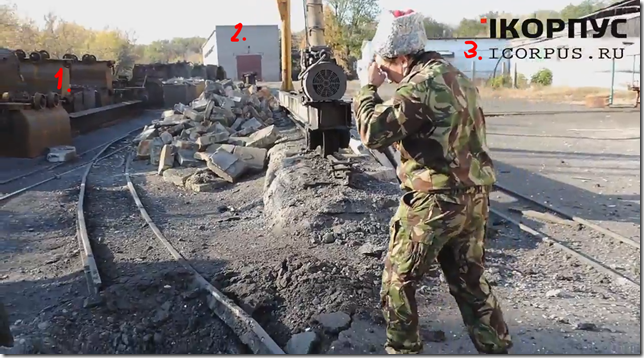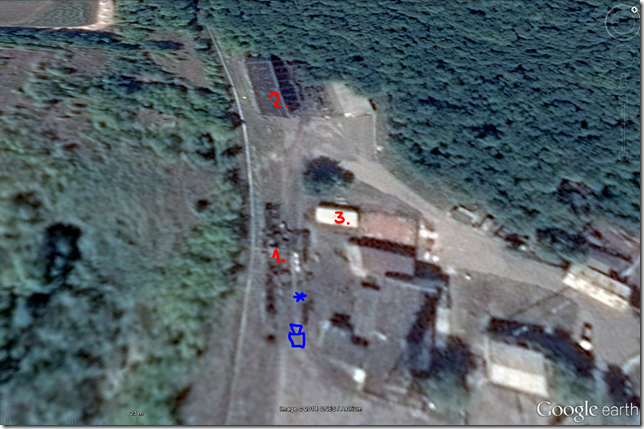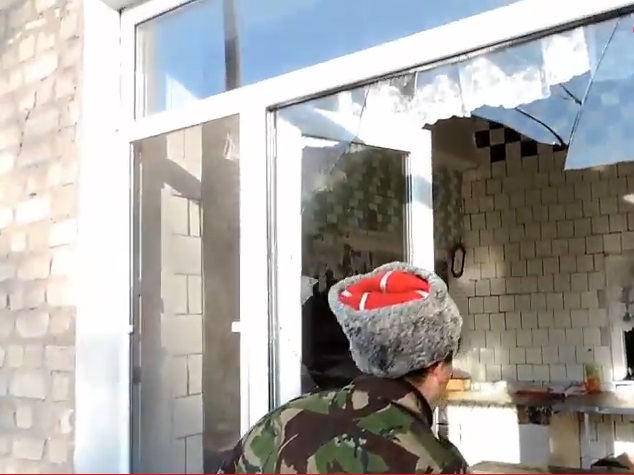Yesterday’s liveblog can be found here. An archive of our liveblogs can be found here. For an overview and analysis of this developing story see our latest podcast.
Please help The Interpreter to continue providing this valuable information service by making a donation towards our costs.
View Ukraine: April, 2014 in a larger map
For links to individual updates click on the timestamps.
For the latest summary of evidence surrounding the shooting down of flight MH17 see our separate article: Evidence Review: Who Shot Down MH17?
Below we will be making regular updates so check back often.
The Ukrainian ATO (Anti-Terror Operation) says that more than 30 shelling incidents had taken place from the Russian-backed separatists on their positions in the last day. The situation as of October 9 is on the map of the National Security and Defense Council:

The Ukrainian military said the weapon used by the separatists was a ZU-23-2.
Separatists bragged about obtaining and shooting this anti-aircraft weapon on October 3 in this video uploaded to YouTube.
The Vergulivskaya (Verhulivka) mine (here on Google Maps) was shelled yesterday on October 10.
A video was uploaded to YouTube
October 10 by Icorpus.ru labeled “Vergelevskaya Mine was shelled by
Ukrainian punishers 10.09.2014.” Icorpus.ru was originally approved by
Col. Igor Strelkov as the news outlet for the “Donetsk People’s
Republic” fighters, and then was dormant for a time when its two war
correspondents were killed with Andrei Stenin in August. This video is
among some recent ones that indicate it is back in business.
The blogger @djp3tros of Ukraine@War has geolocated the video and scene as follows:


Homes near the mine were also damaged.

The mine is about 15 kilometers to the northeast of Debaltsevo, where there have been separatist attacks on Ukrainian positions, so this may indicate where the front line is moving.
We could not determine which side did the shelling in this case.
Aleksandr Zakharchenko, the prime minister of the self-proclaimed “Donetsk People’s Republic,” pledged to keep a “silence regime” starting on October 11.
The mayor’s office of Donetsk reported that 3 people died in
shelling overnight on 10-11 October, and the water system was damaged in
some areas.
There was also a fire at the power sub-station in Smela October 11 which was captured on video.
Literally every day since the ceasefire was negotiated over one month ago it has been broken by Russian-backed separatists. The whole world is watching, and doing little to nothing, as the international airport in Donetsk, which has always been under the Ukrainian government’s control, is attacked every day by Russian-backed militants. The Interpreter has documented many instances of separatist attacks killing civilians. The surrounded Ukrainian troops have desperately fired back. This week, evidence suggests that both Ukrainian and separatist rockets killed civilians in part of Donetsk.
Ukrainian President Poroshenko also warned that without a significant ramp-up of OSCE monitors, there was no way that the ceasefire could be properly monitored by the international community. According to Poroshenko, there are currently 270 OSCE monitors, only 90 of which are in eastern Ukraine, and there would have to be at least 1,500 to properly ensure all sides were complying with the ceasefire agreement. Meanwhile U.S. Assistant Secretary of State for European and Eurasian Affairs Victoria Nuland said that the ceasefire was being broken, and as long as that was the case the monitoring mission could not even occur, a statement that lives in the kind of diplomatic paradox which we have come to expect by watching this crisis unfold.
Germany and France have pledged to use drones to help monitor the ceasefire, but even those plans face substantial resistance from Russia. The Wall Street Journal reports:
German Foreign Minister Frank-Walter Steinmeier said on Friday that his government had submitted a proposal a day earlier that would allow for two drones to be in the air at all times to observe the truce between Ukrainian forces and pro-Russia rebels.
But it was unclear whether the plan was viable, Mr. Steinmeier said, since both Berlin and Paris also want to send armed personnel to provide security for the teams operating the drones—a deployment that could prompt objections from Moscow and faces a possible legislative hurdle in Kiev. (More: Russian Rock Stars Run Afoul of Kremlin Over Ukraine)
“I don’t want to hide the fact that political and legal questions must still be resolved,” Mr. Steinmeier said.
This is the situation in which Ukraine has been stuck for the last month and a half. With conflicts raging in the Middle East, with ebola outbreaks in West Africa and, on occasion, elsewhere, and with American mid-term election season in full swing, the harsh reality of Ukraine is simply not catching the attention of Western people, Western media, or, as a result, Western leaders.